From Chancy(GE) to Müstair (GR) - Switzerland from East to West
Hello to all running enthusiasts and members of Léman Running! Today, I'd like to share with you an exceptional adventure, that of our friend Pierre Zürcher, an emblematic figure in our group. Pierre recently completed an extraordinary feat: crossing Switzerland from west to east, covering 517 kilometres and 11,000 metres of ascent in just 10 days. Accompanied by Paola Coccato and Christian Fatton, this epic journey was marked by intense moments, magnificent landscapes and breathtaking challenges. Here's their story, followed by my conversation with Pierre.
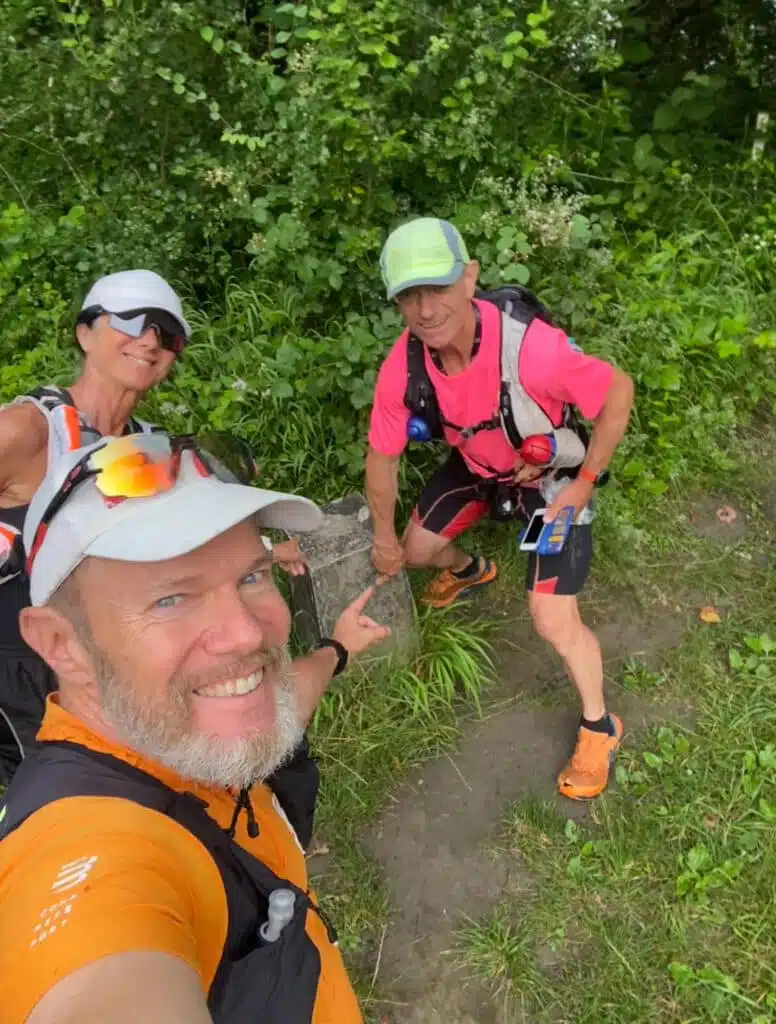
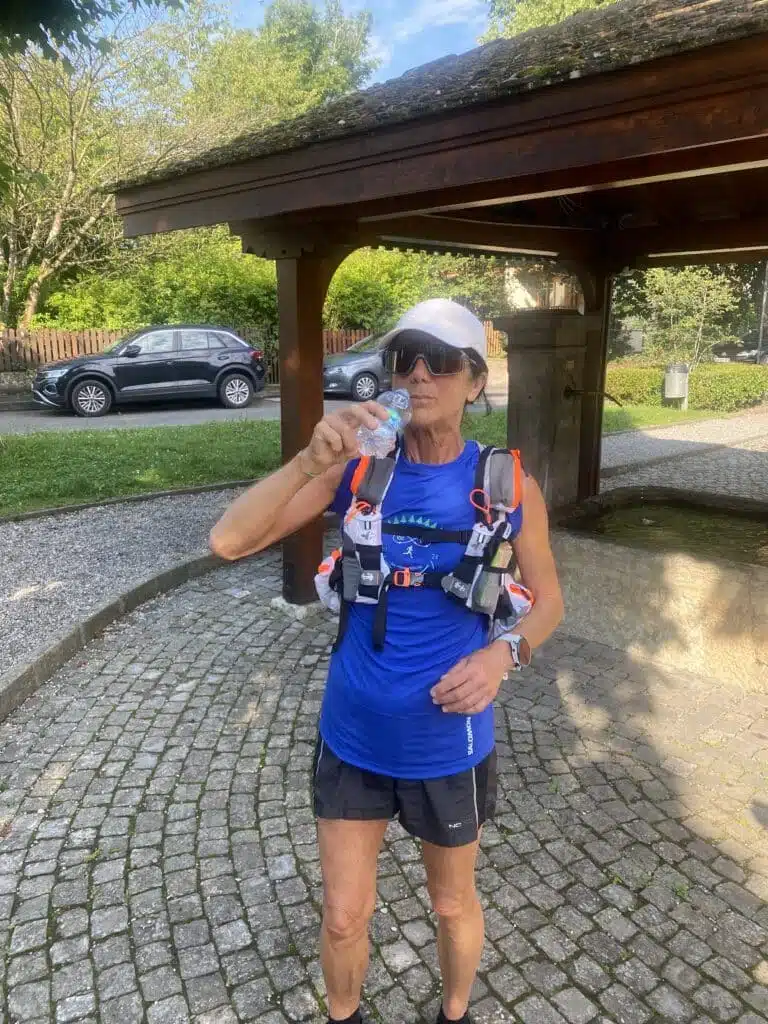

Protagonists and objectives
The 3 protagonists of this first edition:
➡️ Ladies' honour 💐 :
Paola Coccato 🇮🇹
The anecdote : Beat the best Italian performance in category over 6 days with 625 kilometres and finished first woman 4 days later during the 10 days of Policoro 🇮🇹 with 976 kilometres (2021).
➡️ Christian Fatton 🇨🇭
The anecdote He ran the 100 miles (161 km) of Berlin 🇩🇪 in 18h 14m on 14.08.2021. Then, less than a week later, he ran the 100 miles of France 🇫🇷 in 18h 21m. His comment after the 100 miles of France: "It's a shame, I would have liked to have done less than 18 hours".
➡️ Pierre Zürcher 🇨🇭
The anecdote Probably the only (pseudo) runner over 200 kilometres with the highest number of DNFs (Did Not Finish) over this legendary distance. The comment in his school notebook: "Takes the trouble, and gets it"!

The 10 key stages and moments
- Chancy - Etoy (60.9 km) Start of the race in intense 33-degree heat, crossing the cantons of Geneva and Vaud. Intense heat, where Pierre liquefied in the hot asphalt, dehydrated and barely made it to Etoy. Paola went to eat alone that first evening and brought back a pizza, which Pierre ate during the night.
- Etoy - Bulle (60.51 km) Pierre had hoped to get through these first two stages to escape the plains and find the freshness of the Alps. At Vaulruz, he vomited and cursed those first two stages.
- Bulle - Boltigen (36.97 km) Pierre loves to get off the beaten track and wanted to go through the Jogne gorges, which are absolutely magnificent. Paola, who can only see out of one eye, was less keen on the rocky sections.
- Boltigen - Iseltwald (56.29 km) Overcast and light rain, with superb views of Lakes Thun and Brienz. Christian Marti joins the team for the following stages.
- Iseltwald - Sustenpass (47.45 km) All day in the rain, Pierre and Paola love it. They make their way up to the Sustenpass at an altitude of over 2,200 metres, where the hotel is a haven of peace.
- Sustenpass - Sedrun (55.95 km) : Beautiful stage with magnificent scenery, but Pierre arrived at Sedrun with a worrying injury to his right levator muscle.
- Sedrun - Flims (52.08 km) Pierre adjusts his equipment to relieve the pain, but compensates by putting more pressure on his left leg, causing further pain.
- Flims - Wiesen (54.81 km) The right levator has deflated and the left quadriceps hurts less. The last two stages seem more accessible.
- Wiesen - Susch (46.42 km) Easy stage with a very nice final descent. Arriving in Susch, they found a grocery shop to stock up on provisions, with Pierre eating with a shoehorn for lack of cutlery.
- Susch - Müstair (46.77 km) The emotion is intense over the last few kilometres. Touching Switzerland's easternmost customs barrier is a moment of indescribable joy.



Q&A with Pierre Zürcher
1. What motivated you to take over the organisation of this 517 km extreme race across Switzerland?
Pierre : After crossing Switzerland in 6 days in 2022 from the northernmost point to the southernmost point, the organiser was planning a West-East stage, but due to a lack of participants, he decided not to go ahead. His infrastructure included hiring a bus to transport our luggage, as well as daily refreshments halfway through the stage. As for us, we'd already booked the kennels for our dog 'Ultra' for 12 days, and we'd lose the payment if we gave up. So we took over the organisation at short notice and completed the route with almost no luggage and no supplies. So we were light and free!
2. What was the most difficult moment for you during these 10 days of racing, and how did you overcome it?
Pierre The most difficult moment was undoubtedly the first and second stages. I was far too hot and I suffered terribly. The main thing that helped me was to say to myself "OK, you're cooked, but muscularly and articularly you've got absolutely nothing. The basic mechanics are in order. Put some fuel back in the engine, some solids and liquids, and tomorrow you'll be off again, aiming for the mountains that will save your life". It was a bit like Mad Max, but in the morning I was always ready to set off again! I also thought that with all the training I'd done, over 100 kilometres a week (2,871.3 km since 01.01.2024), I'd have the resources to recover overnight and carry on over several days. The experience of other multi-day races also helped me to play down my situation, which was pitiful at the time.

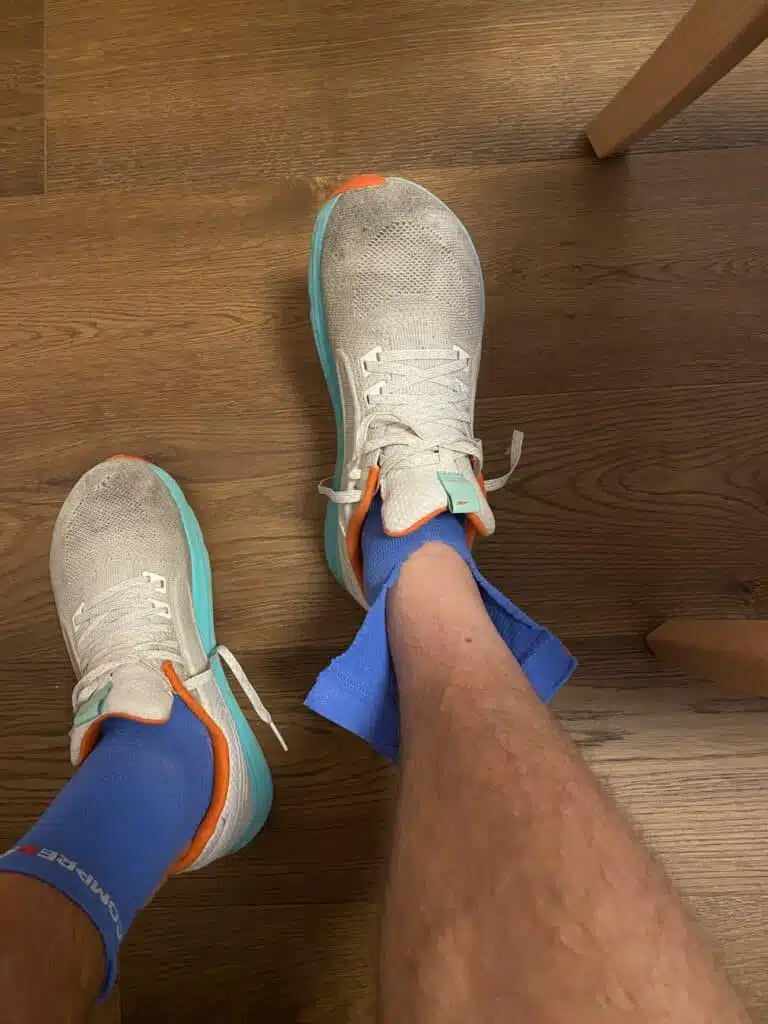
3. Can you tell us about your physical and mental preparation for this race?
Pierre My physical and mental preparation consists of blocks of around 3 weeks, ending 2 weeks before the race. During these 3 weeks, in principle, I do 140, 150 and 140 kilometres. Then I taper off before the race, doing nothing at all 4 or 5 days before the start. Mentally, I think it's the sequence of several races, or experience, that helps me a lot to understand what's going on physically and mentally in the difficult moments. To be mentally ready, you also need to organise all the little details: which bag you're going to take, what clothes, drinks, food, etc. We carried our 'home' on our backs and we had to be ready to go. We were carrying our 'house' on our backs, so in the end it was very simple to take only the essentials so as not to be heavy either. I don't think we made any strategic or organisational mistakes. We ran without putting any unnecessary pressure on ourselves. Well, it took me the first 2 days to disconnect from my daily professional life. But Paola told me the phrase that has stayed with me for the other 8 stages: "That's all we have to do, just leave here this morning and arrive when we arrive at the finish of the stage". Thanks to this little phrase, I detached myself from my habits and I felt liberated to make "the journey".
4. What landscapes or special moments made the biggest impression on you as you crossed Switzerland?
Pierre : It's hard to describe a particular moment or landscape, because there were so many. Sometimes it's like a bucolic postcard you see before your very eyes. Paola and I used to say, "Here we are in Heidi Land", because it was so beautiful and so representative of Switzerland in a single picture: lake, forest, pastures, flowers, cows, chalets, flags and a blue sky with a few white clouds. But sometimes it's also what you discover when you're tired and your basic needs make you appreciate it, like this hidden refreshment bar where you can buy a cold cup of tea when you haven't had anything to drink for too long!
5. Do you have any advice for runners thinking of taking part in long-distance races like this?
Pierre : In my opinion, we need to experiment with shorter races, for example on circuits lasting 24 hours, 48 hours, 72 hours, etc., and increase this gradually. There are plenty of races of this type organised in Europe. The advantage is that you can have your own refuelling station every lap of about 1 kilometre. So you can manage your food, clothing and rest in ideal conditions.
6. How did you manage your diet and hydration during these long stages, especially in such varied weather conditions?
Pierre I left each morning with 2 x 0.5 litres of water, an energy bar, a chocolate and 4 biscuits, as well as some money. The idea was to find water on the way, and then at mid-day find a grocery shop or bakery to buy a sandwich. Switzerland is pretty densely populated and it worked out pretty well, except for a few times when there was nothing, like when you cross the Swiss National Park in the Grisons, where it's pretty wild... and beautiful! In the end, it's when you're stripped of almost everything that you realise the value of simple things.
7. Were there times when you thought about giving up? If so, what kept you going?
Pierre I didn't really think about giving up. For example, in stages 1 and 2, I had mentally programmed myself to get to stage 3 and I was confident in my ability to recover over one night. When I had the problem with my right lifter and there were still 4 stages to go, I was a bit more scared. But the next day, by setting off slowly and setting myself the idea of taking stock after 5 or 10 kilometres, that motivated me. And luckily, after a few hundred metres, I felt that I could move forward, slowly, but still move forward correctly.
8. How did you find the logistical and moral support of your team and team-mates during the race?
Pierre I have to say that Paola and I got on really well and supported each other over the 10 days. We were never more than a hundred metres apart over the 517 kilometres of the race. There's no doubt that sharing this adventure together helped us enormously. We could share our impressions at the same time, talk to each other, wait for each other and vice versa.
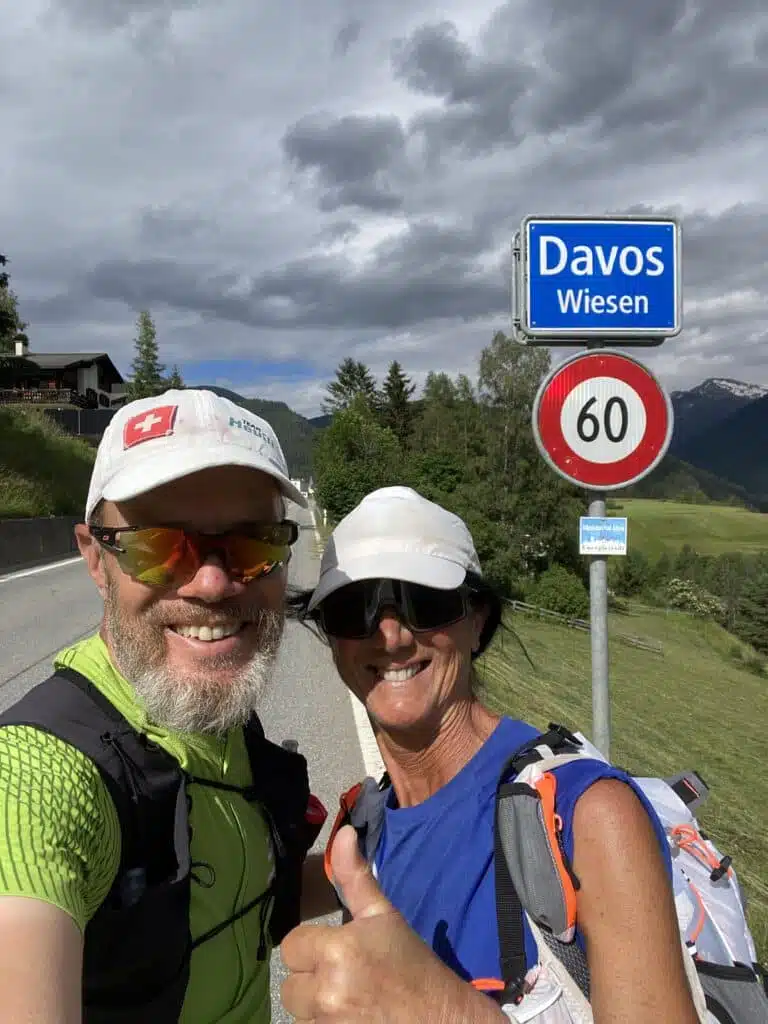
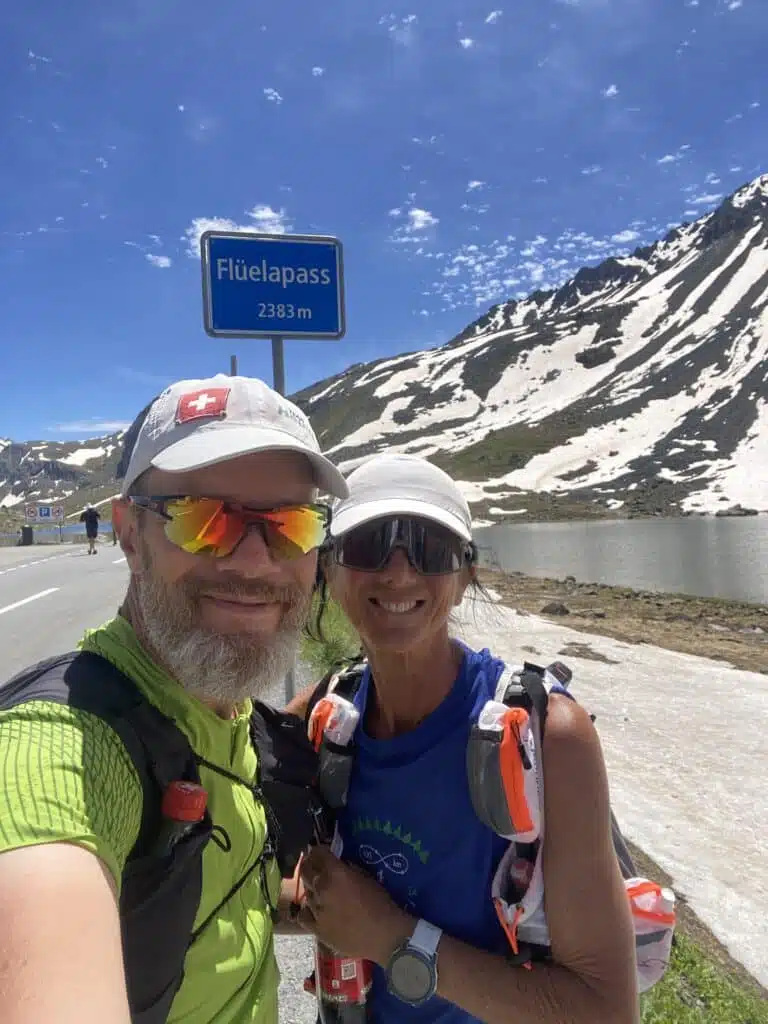

9. What impact has this experience had on your view of running and endurance in general?
Pierre I've realised that a small problem can quickly take on major proportions. But above all, I can now see that you can go even further and for longer by taking it easy on your bike. The slower you go, the further you go!
10. What are your next sporting goals or challenges after this incredible adventure?
Pierre The next race will be the 100 miles (161 km) of Berlin. This commemorative race consists of running around the former West Berlin Wall, which until the end of 1989 was a democratic territory in the former East Germany. My idea is to complete it in less than 24 hours. My feeling, and Paola shares my impression, is that we'd like to run from Venice to Montreux, perhaps in 2025.
11. Choose your question or share your feelings, an anecdote... in short, anything you like.
Pierre An anecdote? Well, on the Wiesen - Susch stage, there was no restaurant open in Susch. We had to stock up at the only grocery shop in the area for our evening meal and breakfast the next day. I bought the only thing that looked like something that would allow me to eat the tuna and vegetable salad that evening, as well as the yoghurt: a shoehorn! It's these unusual moments that leave a lasting impression.
THANK YOU
Thank you Pierre for sharing this inspiring and heartfelt story. Your adventure across Switzerland is not only a demonstration of determination and resilience, but also a source of inspiration for us all. Good luck with your next challenges, we'll be there to support you and follow your exploits with admiration. See you soon on the roads and trails!
